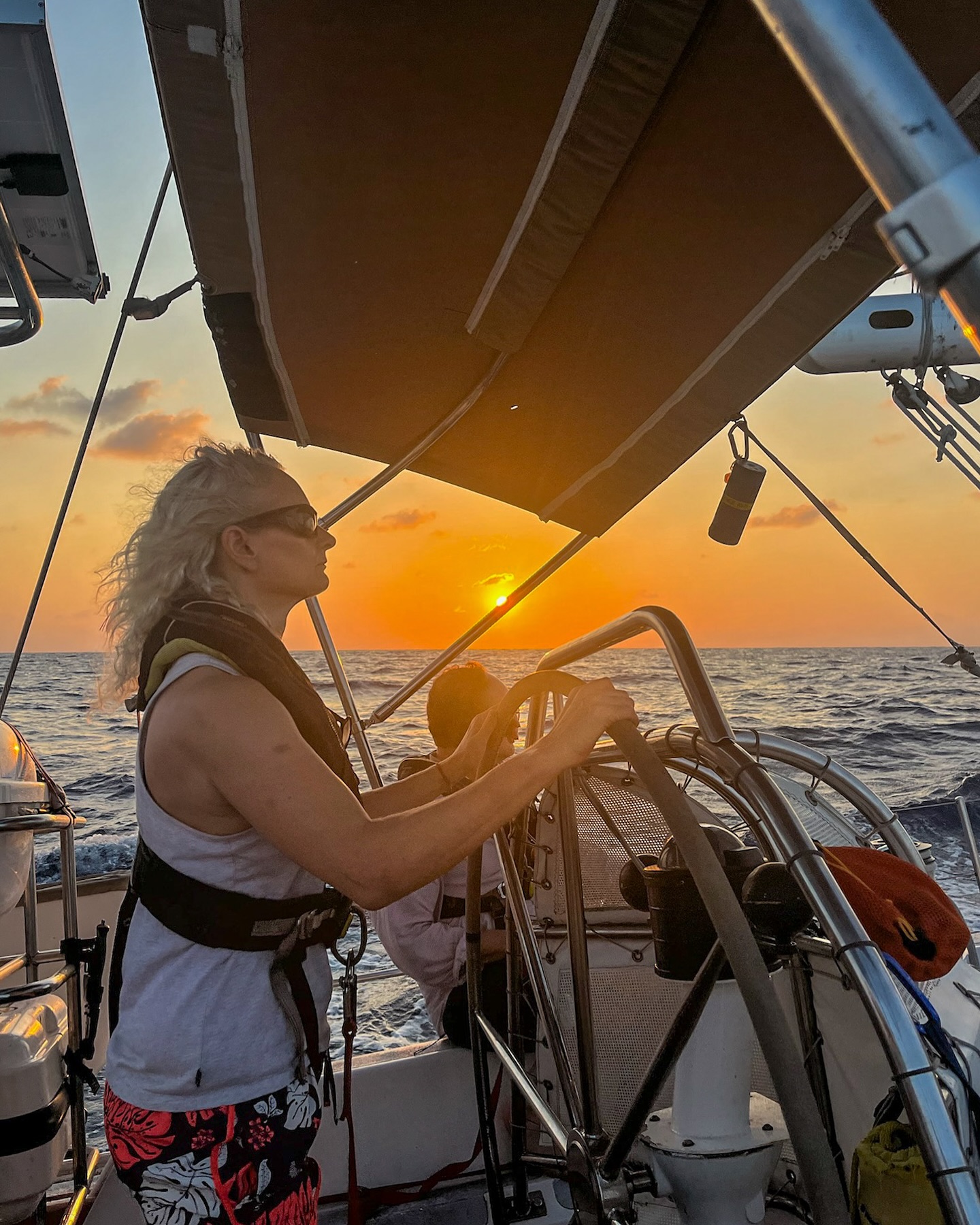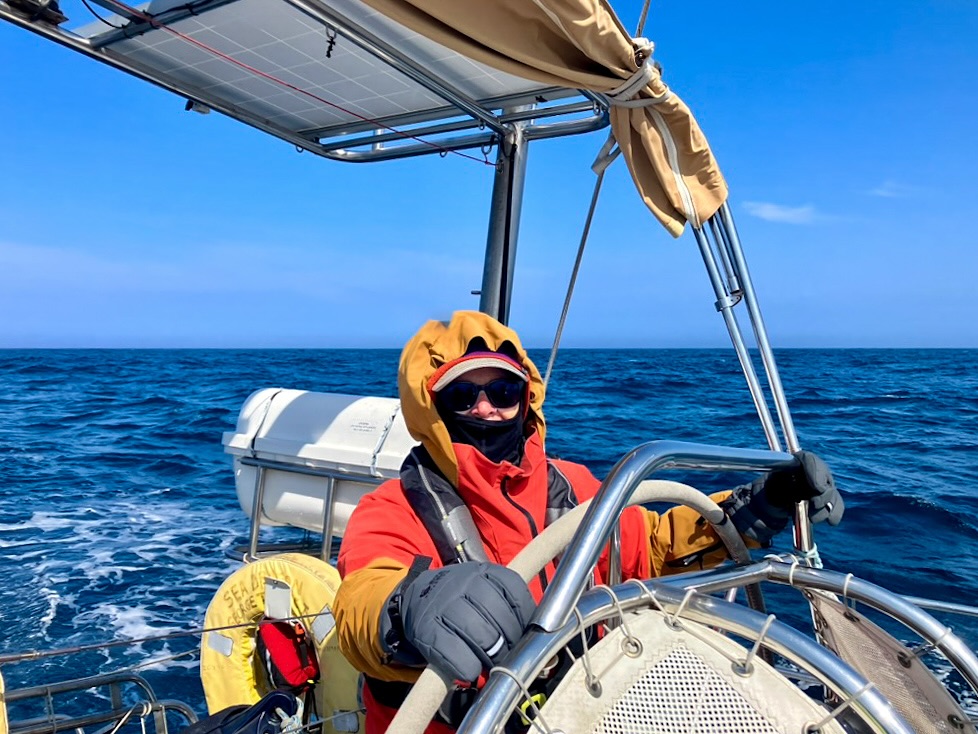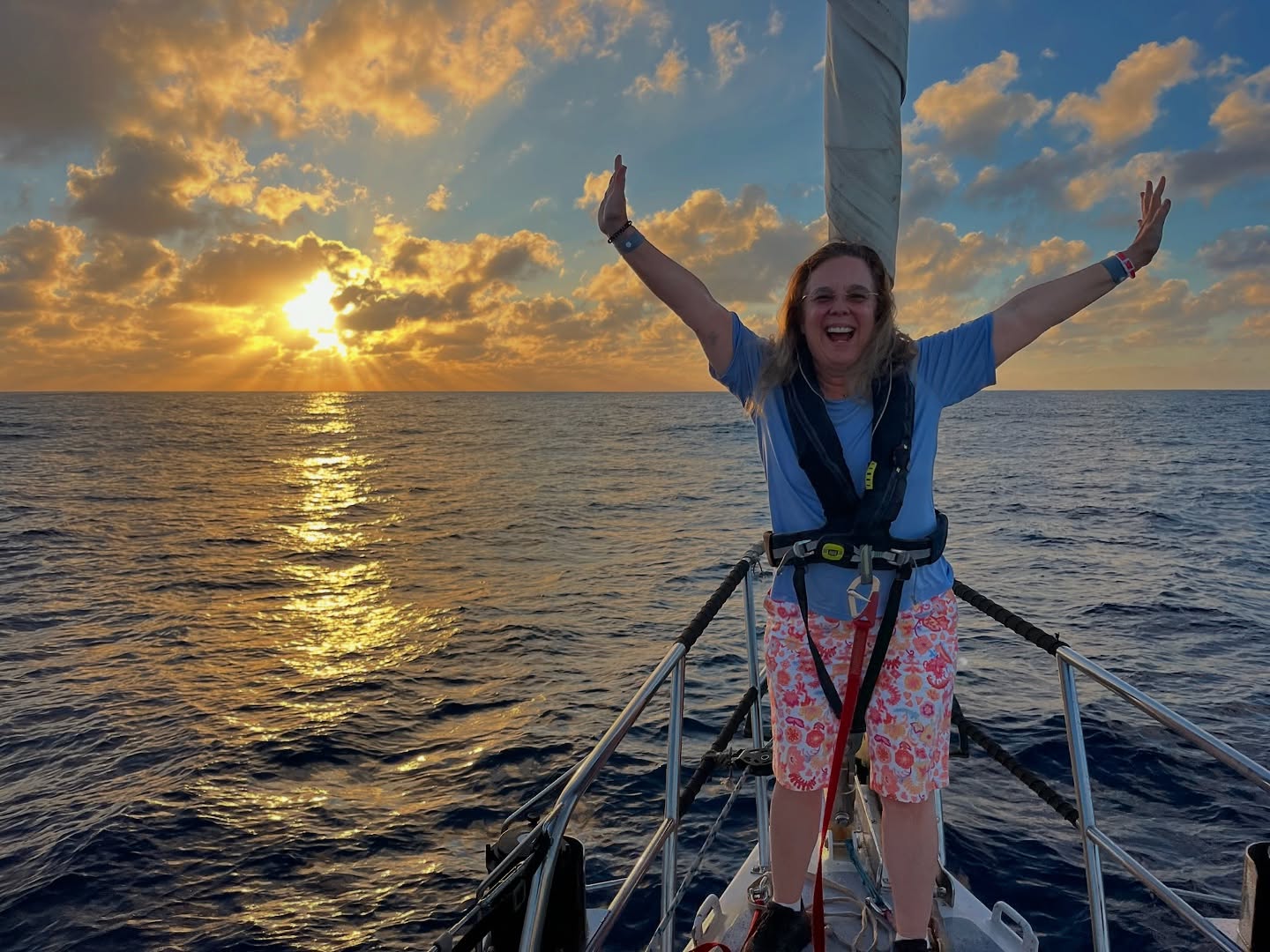We couldn’t go ashore to Great Inagua yesterday because it was Easter Monday, and both the immigration office and the bank were closed. But being stuck in this Bahamian harbour wasn’t the worst thing in the world. We spent yesterday swimming, writing, and doing chores around the boat. Over dinner, the seven of us each wrote a haiku about what we thought we’d find – or hoped we’d find – on Great Inagua. I compiled the haikus into a sequence below. See if you can guess who wrote which part. We’ll tell you in the next blog!
1.
Step ashore with me –
donkey, jeep, birds in the salt.
Out path is dusty.
2.
Officials await
to restock my salt shaker.
Together, one leg.
3.
Morton salt when it
rains. Bahamian pink
passed the flamingo.
4.
Salty flamingos –
crusty wings and flashy beaks.
I am tickled pink.
5.
The sea? The land? What
will be saltier? On this
island, I will drink.
6.
Colors on the shores.
Golden sand with rainbows bright.
Hopeful, wishing clear.
7.
Pot of gold maybe not,
but a double rainbow for
sure will complete my day.
Then, this morning, we finally got clearance to go ashore. We lowered the Dominican Republic flag and raised the Bahamian one. I talked to the group about using a “deep mapping” technique to write about this place. I wanted everyone to choose a location on the island, draw a map, and record the sights, sounds, smells, tastes, and tactile experiences. What plants and animals were in this place? Were there objects about? What was the weather like? How did we emotionally feel in this place? Did the place trigger any memories for us?
Eric, the Sea Dragon’s captain, had everyone pile into the dinghy, and he drove us into Matthew Town’s tiny harbor. I noticed an overturned yacht on the foreshore, and wondered if it had been blown out of the water during the last hurricane in 2008. Then we split up. Steven and I hopped into a pick-up truck with a local named Colin who promised to take us to the flamingos. The other group went into town, but we learned later that they would also go see the flamingos. Colin’s truck rattled and banged down unpaved roads for what seemed like hours. He showed us the salt ponds where salt was mined and processed for Morton, a salt company based in the USA. We drove past mountains of salt that were so big, they looked like white circus tents.
But the best part? The flamingos. We saw several flocks standing in the salt ponds, probably eating the shrimp that gave them their pink color. Colin stopped the truck several yards away so Steven and I could see the birds without spooking them. But eventually the flamingos did take off, and I marveled at the way their long necks stretched into the wind like awkward ballerinas. When we returned to town, and eventually made our way to the beach, I pulled out my notebook and recorded my experiences, and “deep mapped” an area of the coastline.
At dinnertime, after we talked and shared writing over a delicious Indian meal, I introduced a much more somber topic – extinction. I passed around information about different extinct species from the Caribbean region – the Caribbean monk seal, Brace’s Emerald, the Dusky Seaside sparrow. I suggested that we write eulogies for these extinct species, and maybe even have a symbolic “sea burial” for them. I’m looking forward to seeing what we come up with…and for the next leg of this journey! After a day and a half at sea, our next stop will be Georgetown in Great Exuma.
– Elizabeth Claire Alberts, Mission Leader, Writing at Sea, April 7, 2015

























